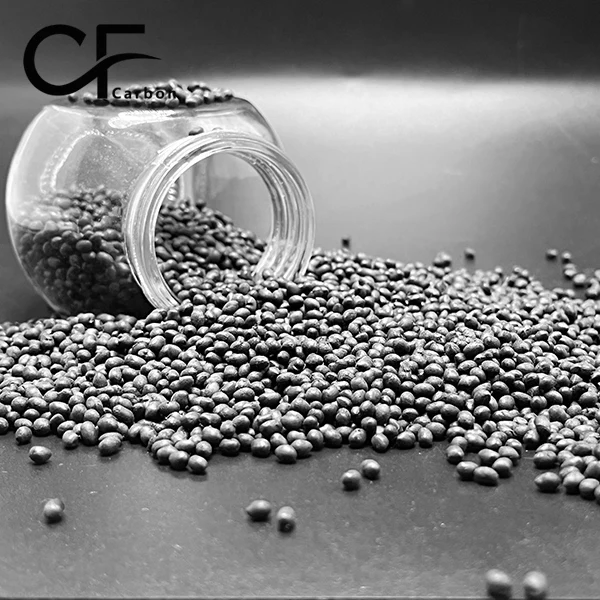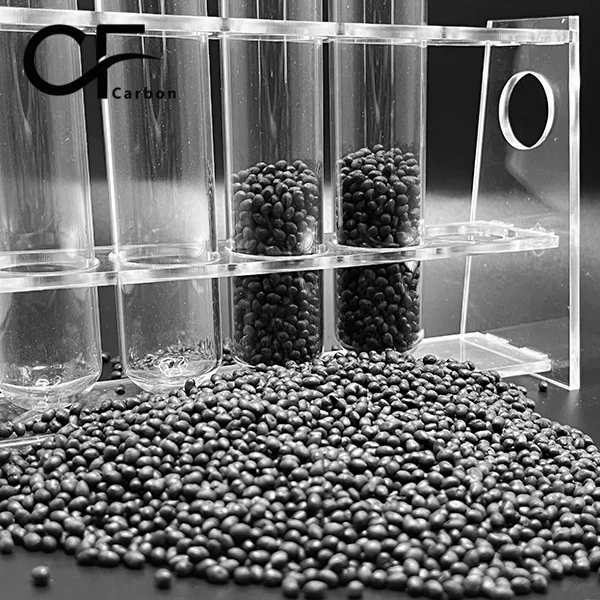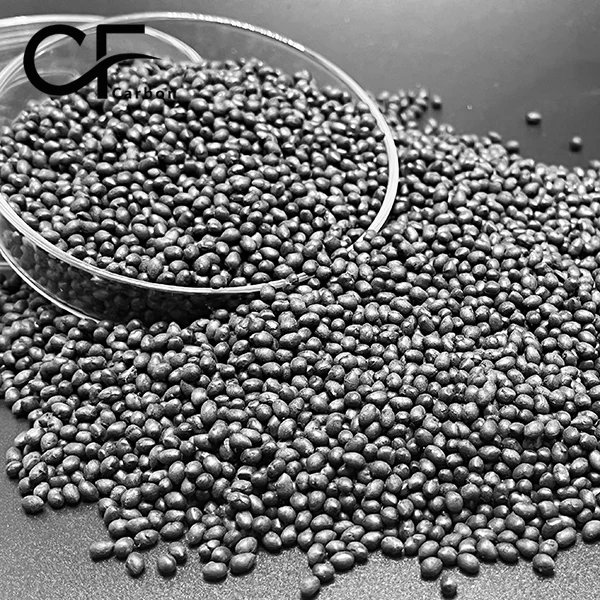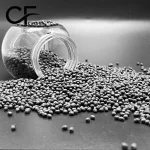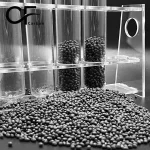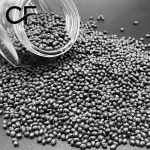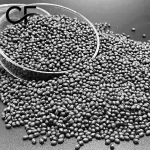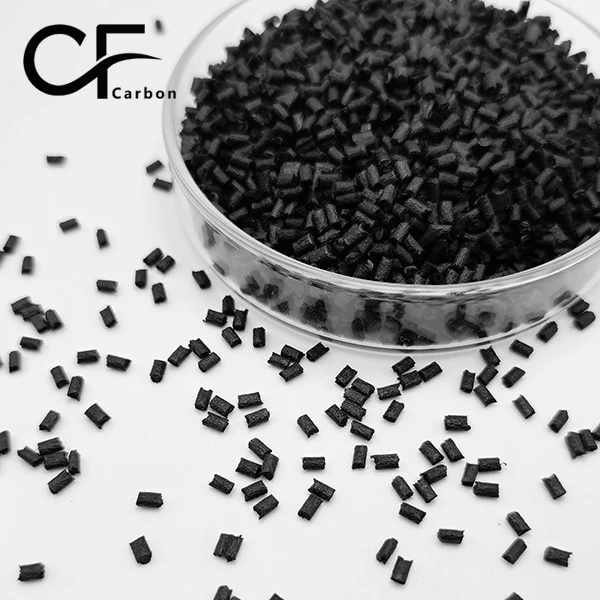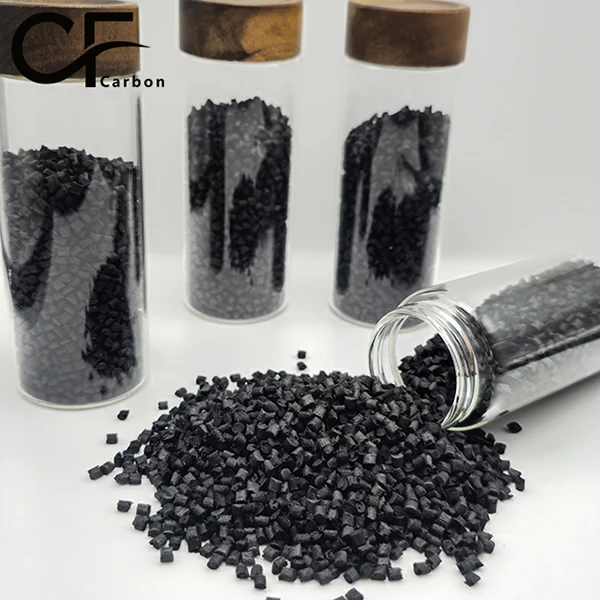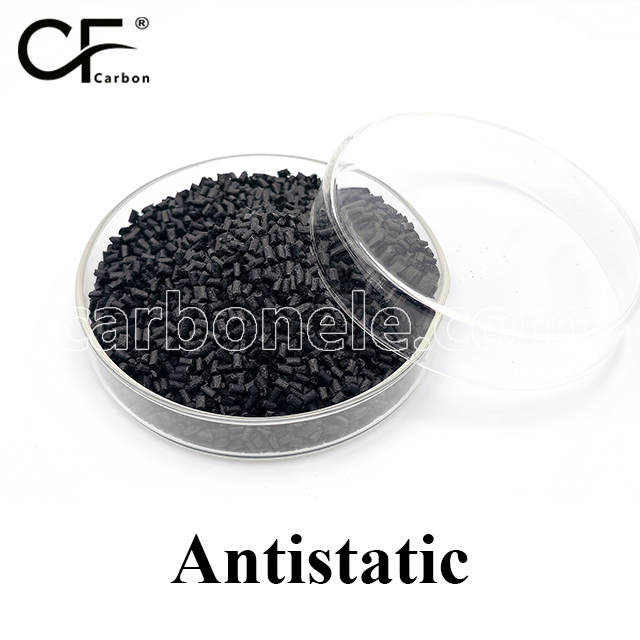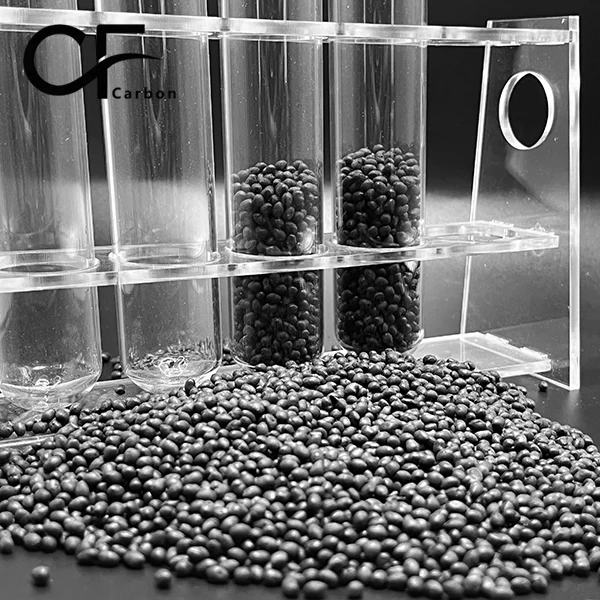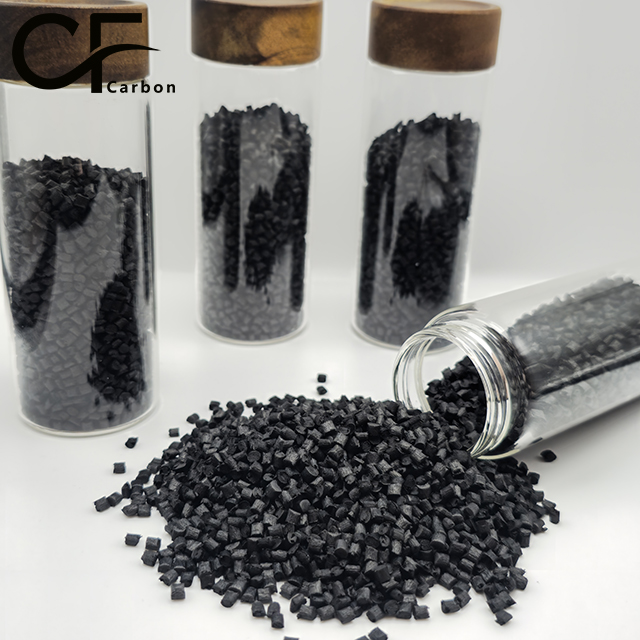
Thermoplastic Carbon Fiber Composites PA6 CF30
1: 210 MPa tensile strength for load-bearing
2: 280 MPa flexural strength under stress
3: 200°C heat deflection temperature resistance
4: 1.8% low water absorption rate
5: 9,500 MPa flexural modulus rigidity
- Manufacturer: Carbon New Material
- OEM/ODM: Acceptable
- Color: Black
- Free samples: ≤10kg
- MOQ: 100kg
- Port: Xiamen
- Model: PA6-CF-BCA3
- Fillers: SCF
I. Thermoplastic Carbon Fiber Composites Overview
Carbon Fiber Composites PA6 CF30 is a high-performance Thermoplastic Carbon Fiber Composite based on polyamide 6 (PA6) reinforced with 30% carbon fiber. This material combines PA6’s chemical resistance with the exceptional mechanical properties of carbon fiber, delivering significantly enhanced strength, stiffness, and dimensional stability for demanding engineering applications.
II. Carbon Fiber Composites PA6 CF30 Key Properties
1. High Tensile and Flexural Strength
Tensile strength reaches 210 MPa, with flexural strength of 280 MPa, markedly superior to unfilled PA6.
2. Excellent Heat Resistance
Heat deflection temperature (HDT) reaches 200°C, maintaining structural integrity in high-temperature environments.
3. Low Moisture Absorption and High Dimensional Stability
Equilibrium water absorption is only 1.8%, with minimal dimensional change, ideal for precision components.
4. High Stiffness Modulus
Flexural modulus reaches 9,500 MPa, providing outstanding resistance to deformation.
5. Good Fatigue and Wear Resistance
Maintains stable performance under cyclic loading, with 40% lower wear rate than pure PA6.
III. Material Main Applications
This Thermoplastic Carbon Fiber Composite is widely used in automotive engine components, drone structural parts, sports equipment, industrial machinery components, and electronic device housings where high strength and lightweight properties are critical.
IV. Carbon Fiber Composites PA6 CF30 in Automotive Engine Covers
A European automaker uses PA6 CF30 to manufacture engine covers, replacing traditional metal materials. The component reduces weight while offering excellent thermal stability and mechanical strength, effectively minimizing vibration noise and improving fuel economy—meeting strict engine compartment requirements.
For more technical details on Thermoplastic Carbon Fiber Composites, feel free to check our technical datasheet or contact us for quotes and catalogs. Note that matrix resin type, carbon fiber content, and manufacturing process significantly affect final properties. We recommend comparative testing with specific carbon fiber reinforced plastics based on your application needs to evaluate the suitability of PA6 CF30. Performance may vary between suppliers.
CFRTP VS. METALS
1. CFRTP exhibits the lowest density (1.50 g/cm³) among all compared materials, significantly outperforming traditional metals like steel (7.85 g/cm³) and copper (8.96 g/cm³), and even surpassing aluminum (2.70 g/cm³) and aluminum alloy (2.80 g/cm³). 2. In terms of strength-to-weight ratio, CFRTP demonstrates superior performance at 120 kN·m/kg, more than doubling the ratio of aluminum alloy (68 kN·m/kg) and far exceeding steel (26 kN·m/kg) and copper (14 kN·m/kg). 3. While steel shows the highest stiffness (200 GPa), CFRTP (150 GPa) outperforms aluminum (70 GPa), aluminum alloy (72 GPa), and copper (110 GPa), offering a favorable balance of rigidity and lightweight properties. 4. CFRTP achieves the highest corrosion resistance rating (9 on a 1-10 scale), surpassing all other materials including aluminum alloy (8), aluminum (7), copper (6), and steel (3), making it ideal for corrosive environments.
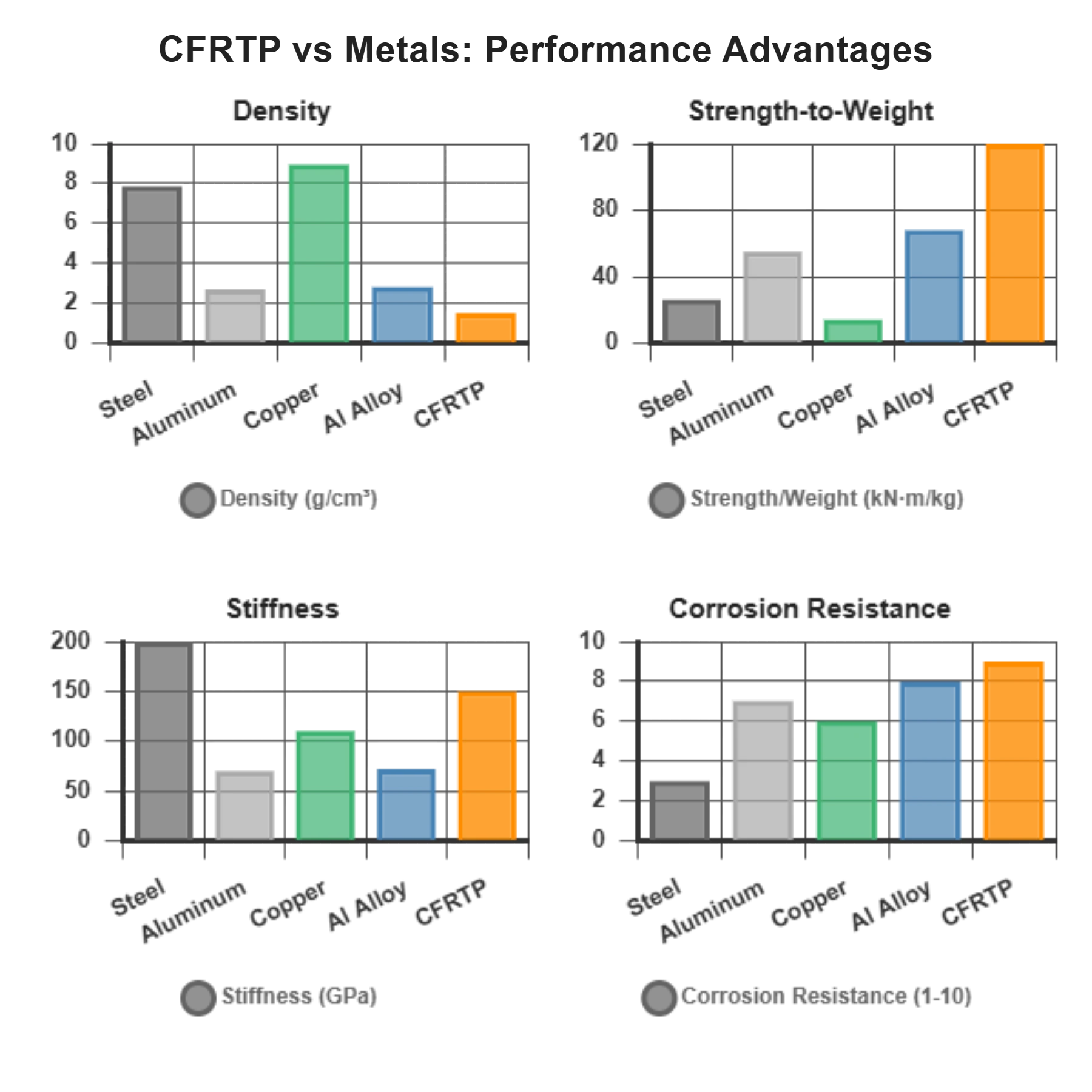
CFRTP VERSUS CFRP
1. CFRTP demonstrates significantly faster processing time (5 minutes) compared to CFRP (45 minutes), representing a 90% reduction in manufacturing duration. 2. In terms of recyclability, CFRTP outperforms CFRP by a large margin, scoring 9 on a 1-10 scale versus CFRP's score of 2. 3. CFRTP exhibits superior impact resistance (90 kJ/m²) compared to CFRP (65 kJ/m²), showing approximately 38% better performance in this category. 4. While CFRP has higher temperature resistance (220°C) than CFRTP (180°C), both materials maintain adequate thermal performance for most applications. 5. CFRTP offers greater design flexibility (rating of 90) compared to CFRP (rating of 60), providing more versatility in manufacturing and application scenarios.



Frequently Asked Questions
Carbon (Xiamen) New Material Co., Ltd. aims to provide buyers with "one-stop" worry-free high-quality services. Here you can find all information about carbon fiber engineering plastics. If you still have questions, please send us an email for consultation!
-
How can I contact the manufacturer of a product that interests me?
When you find a product you are interested in, you can contact the manufacturer directly by sending an email and we will get back to you as soon as possible.
-
How do I find the products that interest me?
All you need to do is enter the keyword, product name in the search window and press the Enter key on your keyboard. Your search results page will then be displayed. You can also search within the product category pages on the home page. Each category is divided into subcategories, allowing you to refine your search and find products that interest you.
-
Where will I find a buying guide?
Please contact our after-sales service directly and we will provide you with a comprehensive operating guide.
-
What are CF Reinforced Thermoplastic Composites?
CF Reinforced Thermoplastic Composites are materials where carbon fibers are incorporated into a thermoplastic matrix. They combine the strength and stiffness of carbon fibers with the processability and recyclability of thermoplastics. For instance, they are used in automotive parts like bumper beams.
-
What are the benefits of CF Reinforced Thermoplastic Composites over traditional composites?
The key benefits include faster production cycles, easier recyclability, and better impact resistance. They also offer design flexibility. An example is in the manufacturing of consumer electronics casings where complex shapes can be achieved more easily.
-
How are CF Reinforced Thermoplastic Composites processed?
Common processing methods include injection molding, extrusion, and compression molding. Injection molding is widely used for mass production. For example, in the production of small components for the medical industry.
-
What industries use CF Reinforced Thermoplastic Composites?
They are utilized in aerospace, automotive, medical, and sports equipment industries. In aerospace, they can be found in interior components. In the medical field, they might be used in prosthetics.
-
How does the carbon fiber content affect the properties of the composites?
Higher carbon fiber content generally leads to increased strength and stiffness but may reduce ductility. A moderate content is often balanced for specific applications. For example, a higher content might be preferred in structural parts of a race car.
-
What are the challenges in using CF Reinforced Thermoplastic Composites?
Challenges include higher material costs, complex processing equipment requirements, and ensuring uniform fiber dispersion. Issues with adhesion between the fibers and the matrix can also arise. An example is in achieving consistent quality in large-scale production.







